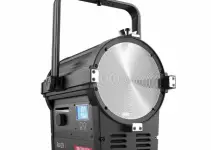You may be wondering what happened to the Sigma fp? It seemed like it was going to be the next big thing, but it quietly faded in the background of the online chatter referring to the camera world. How is that? Probably there’s been a little bit of bad luck in the timing of the announcement since other news flooded the scene.
Add to that the fact that the filmmaking crowd is kind of picky, and Sigma was not off for a good start. And that’s a shame since the fp is a great camera. The guys from The Slanted Lens are comparing the Sigma fp to another great counterpart, extremely focused on video, that is the Panasonic S1H. Let’s see what comes out of it.
Right off the bat, the spec sheets give us a clear indication. The S1H is a more complete camera, it’s an excellent all-rounder. There’s a plethora of frame rates and resolutions available, while the Sigma fp is much more limited in that regard, but in return packs a nice hidden punch with in-camera Raw recording. Plus, it has the smallest body in the full-frame range.
The latter does not mean that it’s less complete than the S1H: you’ve got a lot of first-party accessories. The big difference, though, becomes apparent when you consider the price tag of both cameras since Panasonic’s offering costs twice as much when compared to the Sigma fp.
As per the image quality, the S1H has the upper hand, at least on paper. It packs the same Log profile inherited from the much more pricier Varicam. The Sigma fp instead can shoot Raw, so the challenge should be open to either to take the crown.
Overall, both rivals produce nice images, but the S1H seems to render better colors, while the Sigma fp produces nicer skin tones, to a certain extent at least.
Overexposing and underexposing heavily the cameras to test the dynamic range hides a big surprise. The Sigma fp becomes unusable at 2 stops over, while the S1H holds up to the naked eye until 4 stops over, even if the scopes say it’s losing some information.
As expected, the Sigma fp holds on quite well while underexposing, while the Log footage of the S1H is performing better when overexposed.
Beyond that, the ISO test is giving a little advantage to the S1H. The Sigma fp tends to produce moireé patterns on certain occasions, and the whole color rendition, while still keeping up, gets noisy after the ISO 1600 mark.
All in all, both cameras are not comfortable going too high in ISO as they are better off while working on the lowest settings. That’s not to say they can’t be used, but it’s safe to say that they are low-ISO performers in their nature.
Now, it’s time to mix lights and test both regarding sensor response to this mixture of different color temperatures. The rivals perform in a quite similar way one to another.
So much, in fact, that we could bet that in a blind test most people wouldn’t guess the right one. The Panasonic has much more vivid colors, especially reds seem to be gently represented. Sigma develops a strange noise pattern in the shadows instead.
So drawing the conclusion, we have a clear winner, and it could not be otherwise. The S1H is a much more complete camera system, it’s easier to handle, has better ergonomics, more options… The Sigma fp, on the other hand, is more of a state of the art proof of concept, beautiful, but you’d never use it “day to day”.
As Jay said quite cleverly in the video: “it’s a B-Cam”. It’s a camera good for shooting on gimbals, taking shots in tight spaces, and so on. That is unless you can’t afford the price needed for the Panasonic, then suddenly the Sigma fp becomes a wonderful alternative, especially for the price.
[source: The Slanted Lens]
Sigma fp Mirrorless Digital Camera (B&H, Amazon)
Panasonic Lumix DC-S1H Mirrorless Digital Camera (B&H, Amazon)
Disclaimer: As an Amazon Associate partner and participant in B&H and Adorama Affiliate programmes, we earn a small comission from each purchase made through the affiliate links listed above at no additional cost to you.



